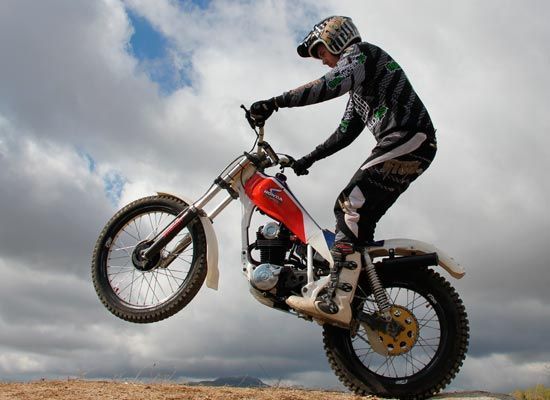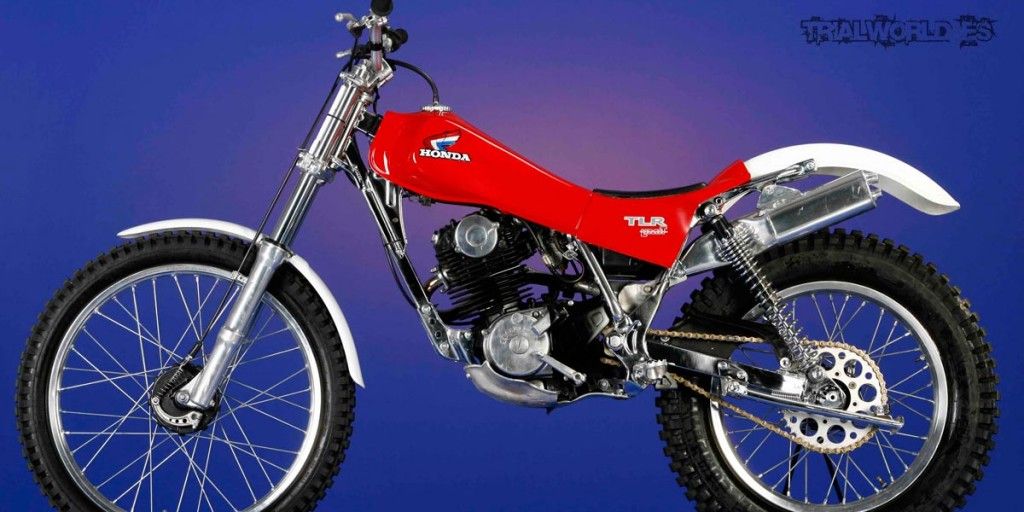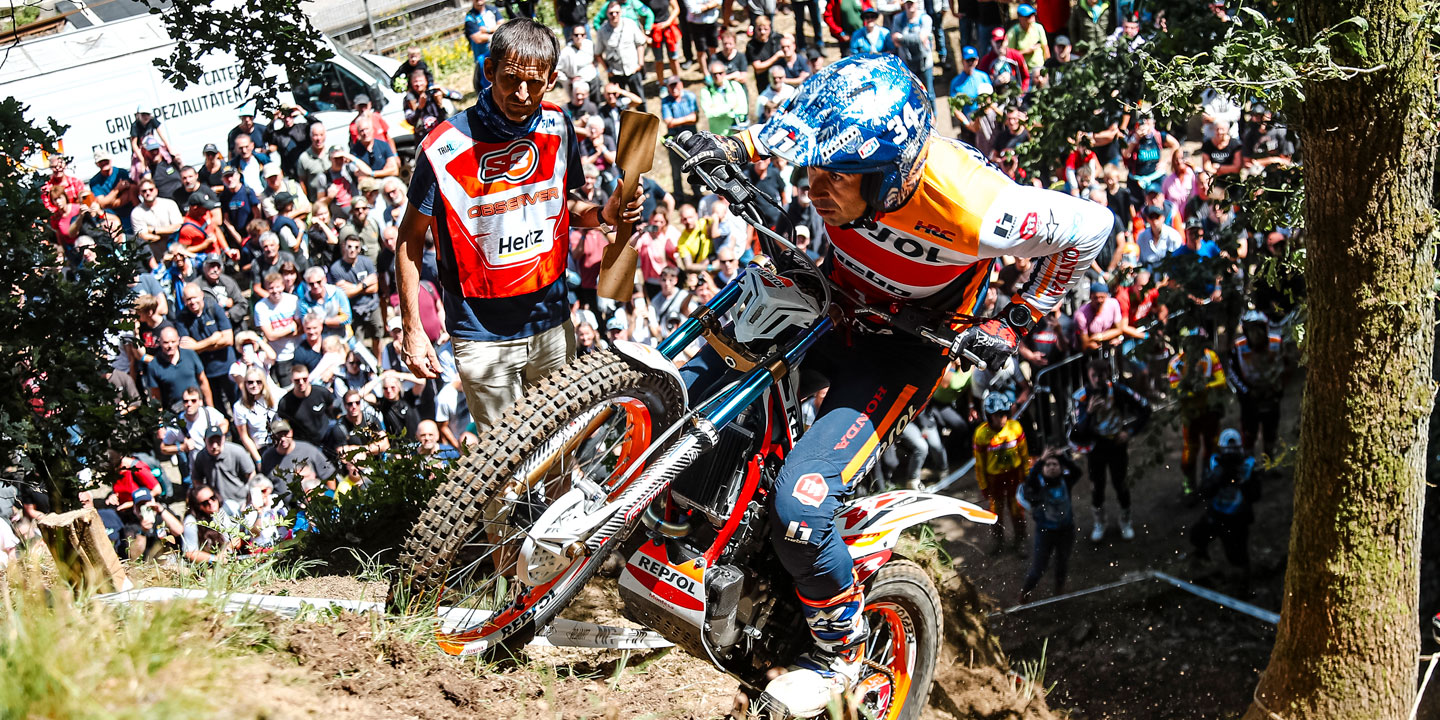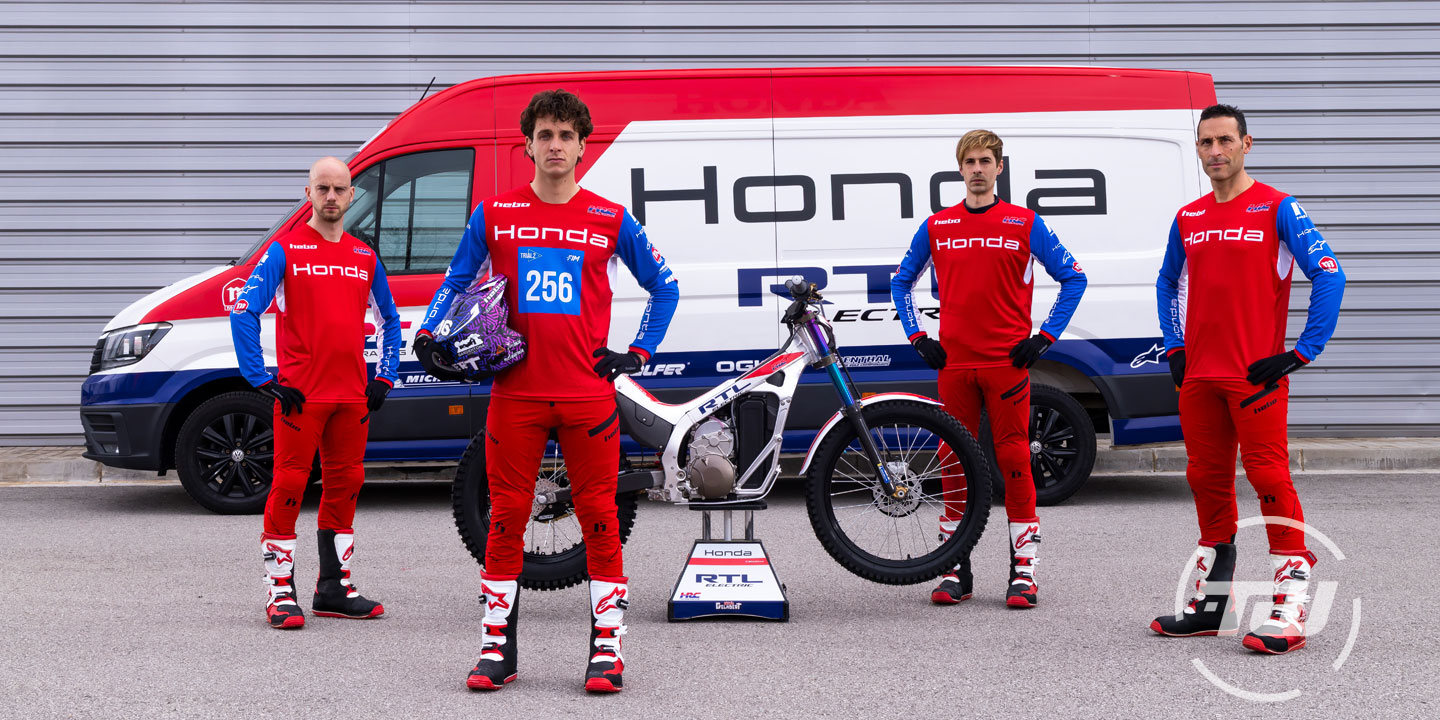After Eddy Lejeune, a Belgian genius with glasses and the countenance of a mathematician, won three consecutive world titles for Honda – in 1982, 1983 and 1984 – things began to get increasingly difficult for the Japanese giant: the Hondas lost ground to the new generation 2T, which was much simpler, lighter and had a monoshock.
HONDA TLR TRIAL
“Use under normal conditions.” This was the advertising slogan with which Honda promoted the TLR 250 in 1982, a particularly fruitful year, as Lejeune would win his first world title and a creditable third place in the Six Days of Scotland.
Based on the RTL 360 with which Eddy won the World Championship, Honda decided to manufacture, under the pseudonym TLR, two practically identical versions that would mark a before and after in the brand: the 200 and the 250.
Up until now, the trial slings that were imported from Japan left a lot to be desired in terms of aesthetics and performance. These four-stroke engines, which reminded the English of their ancestral large-displacement motorcycles, were usually transformed to the limit to make the most of their discreet performance.
The TLR 200 turned out to be an example of a practical, reliable and economical bike. The low consumption of its 4-stroke engine, together with the perfect staggering of its six-speed gearbox, made the small 200 perform with impeccable dexterity among the pack of two-stroke motorcycles that dominated the market.
Although the resemblance to the TLR 250 is undeniable, the latter has the features of a more professional and specialized bike. Its engine, more advanced and compact than that of the 200, offers that extra dose of torque and power that so limited its little sister in the most compromised areas; But all that glitters is not gold, as it is also more demanding with the pilot.
The TLR has an overall length of 2,030mm; while the wheelbase is virtually identical to any modern bike. In fact, if it weren’t for the fact that the footpeg anchor is higher and the seat a hundred millimeters below, we could say that the general metric of today’s motorcycles maintains the same canons.
The Honda TLR allows you to do areas of medium difficulty without any problemsLet’s talk about the start-up. The TLR boots up not unlike the 2T style. All you have to do is lift a comfortable cam on the carburetor and give a small hit of the gas while turning the lever. The TLR is, even with the gear engaged, surprisingly effective in this area.
SAME BACKGROUND, DIFFERENT SHAPE
The engine has already come to life, but it’s hard to believe.
Thanks to the low purr of its valves and the perfect synchronism of all the components, we could even dare to measure its pulsations. They are like real Swiss watches.
Nor has the feel or sound of mechanics changed, which, at the slightest hint of the throttle fist, awaken from their slumber with a low roar and begin to rev at a dizzying pace.
Honda engines offer textbook low-speed handling. This allows the pilot to easily predict their reactions and only worry about enjoying themselves within the zones. They are engines that seem to have no end in the escalation of revolutions; They endure the overrevs extraordinarily despite having reached their maximum power register. The best secret to driving them is to make the most of the low rev range and inertia of the terrain.
Although the clutches of our protagonists coincide in one aspect: speed. The TLR, more than a clutch, the left lever on the handlebar acts as a switch: it’s “everything” or “nothing”. The clutch of the “two and a half” did not inherit the progressivity of the “two hundred”, which is why some pilots of the time made small modifications. Discussing the problem with Mike Andrews, he said: “We modified the inner clutch cam, giving it more curvature. In this way we gained much more progressivity. Some of us also chose to place two gaskets at the base of the cylinder to finish smoothing out the response.”











